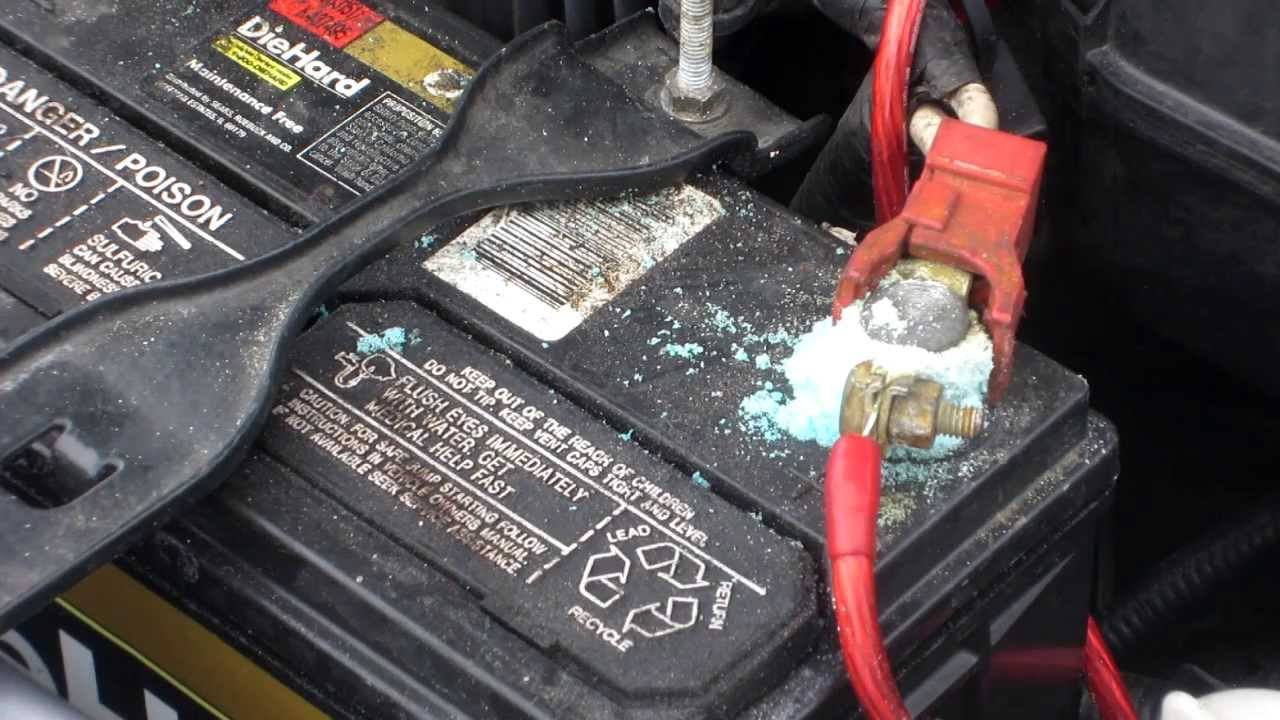If you’ve opened the bonnet of your car and noticed a greenish/white fungus looking growth on the terminals of your car battery, this is a sign of corrosion. Battery corrosion can be caused by a range of different issues and can cause a variety of problems for your car, including a considerable drop in your car battery's lifespan.
If your car battery has corrosion on it, you will need to get rid of it. We run through what causes car battery corrosion, what damage it can do to your car and how to get rid of it.
What causes car batteries to corrode?
A range of different issues can cause corrosion in car batteries. Let’s take a look at some of the most common causes of battery corrosion.
You have an old battery
If your battery is over 5 years old, it’s more likely that corrosion could occur (corrosion usually doesn’t happen with new batteries). If your battery is less than 5 years old and has corrosion on it, you can clean it off (more on how to do that later), and it will fractionally extend the life of the battery; however, it’s more than likely this particular battery will be on the way out soon and it’s worthwhile swapping it over for a new one.
Note: if you’re not sure if your battery is dying, take a look at our article Telltale signs your car battery is about to die.
Your battery is leaking electrolyte solution
If your battery has moved in the chassis or been tipped or damaged at some stage, this could cause it to leak electrolyte solution. When your battery leaks electrolyte solution, this can build up on the terminal and cause corrosion.
Your battery is overcharging
Faulty alternators and voltage regulators or even incorrect usage of car battery chargers can cause your battery to overcharge. If this happens, often the electrolyte volume will expand inside, causing leaks onto the outside of the battery. In extreme cases the electrolyte solution can boil, causing acidic gas to steam through the vent tubes, which will quickly lead to corrosion.
Why is corrosion bad for car batteries?
Corrosion is a chemical reaction to different acids and environments under the bonnet of your car. Corroded battery terminals are definitely one of the biggest causes of reduced battery life and why cars won’t start or have problems starting.
Because the corrosion acts as a barrier to the electrical current moving from the battery to the rest of your vehicle causing insufficient power, often cars with corrosion on their batteries won’t receive regular charging from the alternator as the current is constantly being interrupted.
An underperforming battery can lead to additional issues with things like air conditioning, reversing camera and the onboard computer. If the onboard computer starts having problems, this can lead to much bigger issues in your vehicle.
How to clean corrosion from your battery terminals
This is something you can do at home however, if you’re not confident about following the steps below, please feel free to bring your car to one of our stores, and we would be more than happy to clean your battery terminals for you.
NOTE: It’s worth noting that in some models of cars if you disconnect the battery, the car stereo can have an ‘anti-theft feature’ that requires you to add a special code before it will work again. If you don’t know this code (if, for example, you purchased the car second hand and wasn’t provided with the code or you’ve lost it), some car makers will charge a fee to reset the code and get your radio working again.
What you will need:-
- Cleaning solution – baking soda, battery cleaner
- A stiff wire brush, battery brush or old toothbrush
- Pliers, a wrench or a shifting spanner
- Gloves for protection
- Petroleum jelly
- Rags for cleaning
Step 1
Make sure the car is turned off.
Step 2
NOTE - The order in which you disconnect the battery is super important to ensure you don’t get a shock.
- Detach the negative cable first (there will be a - or the word NEG on it)
- Detach the positive cable second (there will be a + or the word POS on it)
Step 3
Take a good look over the battery cables to ensure there’s no damage. If you can see cracks, fraying or corrosion in the battery cables, it’s worth replacing them.
Step 4
Now it’s time to loosen up the corrosion from your battery terminals. If you have a battery cleaner, simply spray this on your terminals and follow the instructions on the back of the can. It’s important you don’t get any of this spray on your paintwork as it can leave permanent stains.
If you’re using baking soda, pour the powder carefully around the corroded areas and then slowly pour a small amount of water onto the powder. This will cause a chemical reaction and loosen up the corrosion.
Next, brush the corrosion off with your old toothbrush or wire brush being very careful not to get any on your skin or near your eyes as there still may be active acid in the mix that can cause chemical burns.
Step 5
Once you’ve gotten rid of all the corrosion, rinse each terminal and the clamps with clean water. Next wipe it down with a rag and make sure it’s completely dry. Once you’ve made sure the terminals are dry, rub a small amount of petroleum jelly onto the terminals to help prevent future corrosion.
Step 6
Now it’s time to reconnect the battery. It’s important to make sure you also do this in the right order.
- Connect the positive terminal first
- Connect the negative terminal second
That’s it! You’ve cleaned your car battery of corrosion. Hopefully this will get you back on the road again and heading off on your next adventure.

